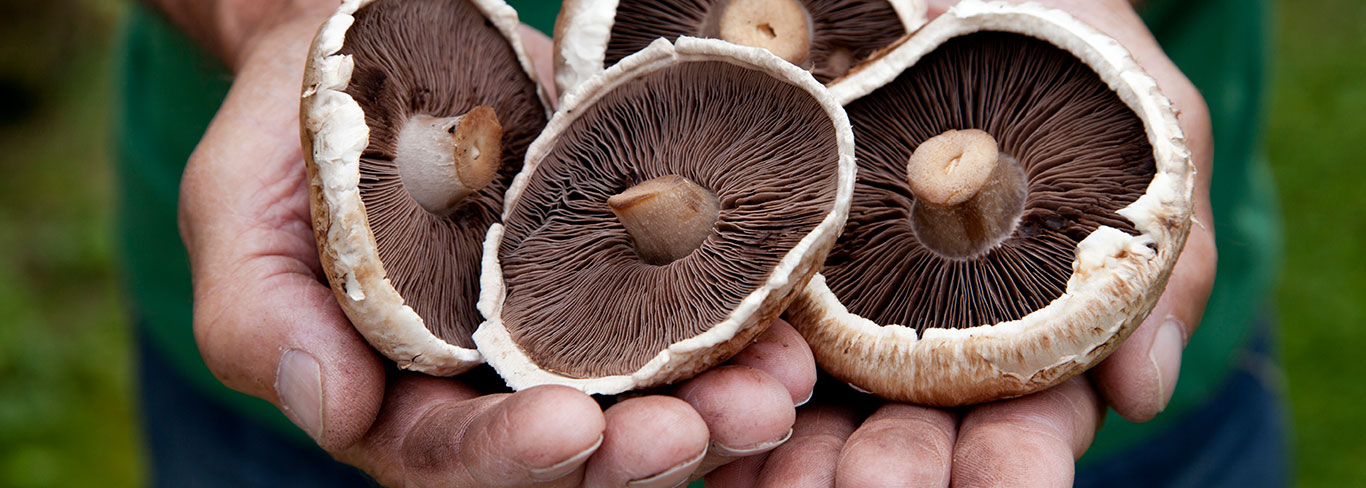Sustainability

Mushrooms are healthy on the plate and gentle on the planet. Researchers have noted mushrooms can be considered one of the most sustainably produced foods in the United States.
Today, consumers are beginning to use one more guideline to determine how to spend their food dollars – sustainability. The public is increasingly curious about where and how their food is produced and what impact it has on the environment; and for good reason, the world’s population is rapidly expanding, and it’s estimated there will be over 9 billion people on the planet by 2050.
So what makes mushrooms so sustainable?
Water Required is a Fraction Compared to Other Foods
SureHarvest calculated the overall water footprint per pound of production by collecting information on freshwater applied, precipitation and water embedded in the composting ingredients. The 1.8 gallons of water required to produce a pound of mushrooms is a fraction of water inputs required for many other foods.
Keeps CO2 Emissions and Energy Footprint in Check
To determine the 1.0 kilowatt hours (kWh) energy usage per pound of mushrooms, researchers calculated energy consumed during harvest by converting fuel use by type into kWh, then combined with kWh of electricity use. CO2 equivalent emissions were calculated by tracking total emissions from electricity and fuel used for composting equipment and growing operations (e.g. equipment, heating, cooling, etc.).
Mushrooms’ Small Growing Space Conserves Soil, Nets High Yields
The study calculated the average yield per square foot by measuring more than 42 million square feet of mushroom production area. Each year, growers are able to produce millions of pounds of mushrooms on just a few acres of land. In addition, the soil used to produce mushrooms is made of composted materials. After mushrooms are harvested, the soil is recycled for multiple uses, including potting soil. The 7.1 pounds of mushroom yield per square foot is achieved in part because mushroom beds are stacked vertically in growing facilities, allowing a high volume of mushrooms to be grown in a relatively small space.
Sustainability Resources
Share the earth-friendly mushrooms with customers.
Study published in The International Journal of Life Cycle Assessment
Download the published study: A life cycle assessment of Agricus bisporus mushroom production in the USA, The International Journal of Life Cycle Assessment, 2018 [download the PDF]
SureHarvest The Mushroom Sustainability Story: Water, Energy and Climate Environmental Metrics
Report researched and developed by SureHarvest, a leading sustainability analysis and research firm, The Mushroom Sustainability Story: Water, Energy and Climate Environmental Metrics study is the result of a two-year initiative to document mushroom production environment metrics. [download the PDF]
The Sustainability Story Infographic
A snapshot of the of mushroom sustainability and their effect on the planet. 8.5” x 11”. [download the PDF]
Press Releases
Find our past and present press releases distributed by the Mushroom Council.


